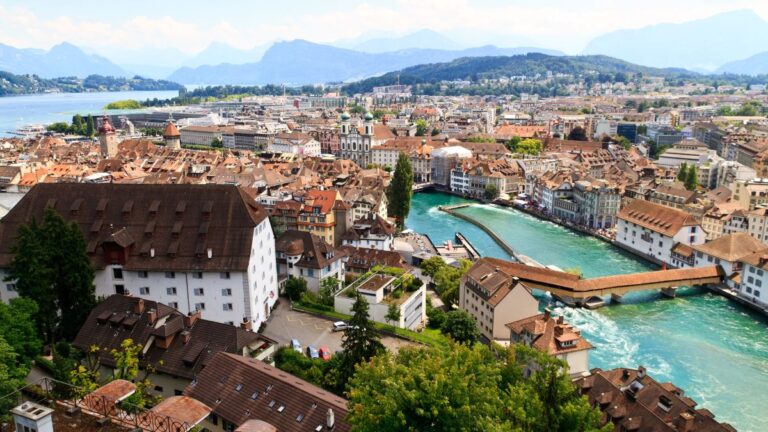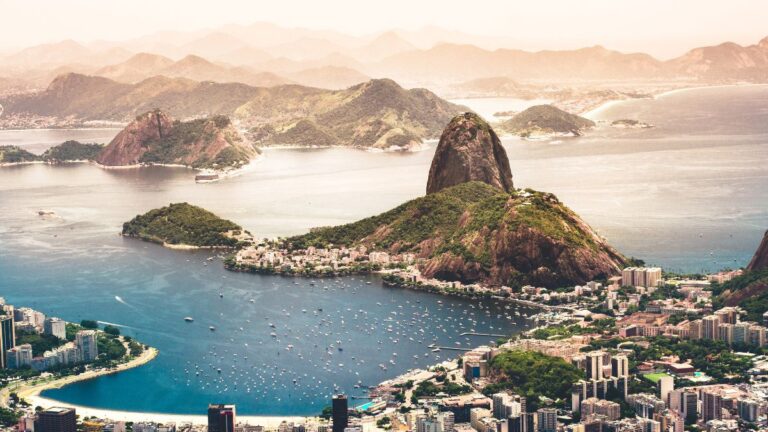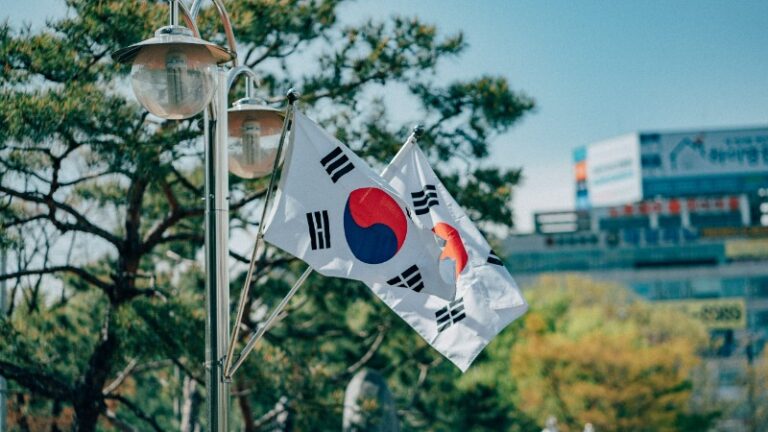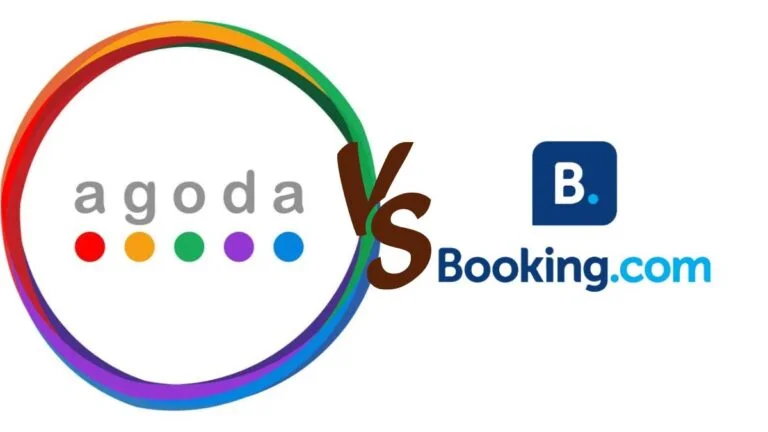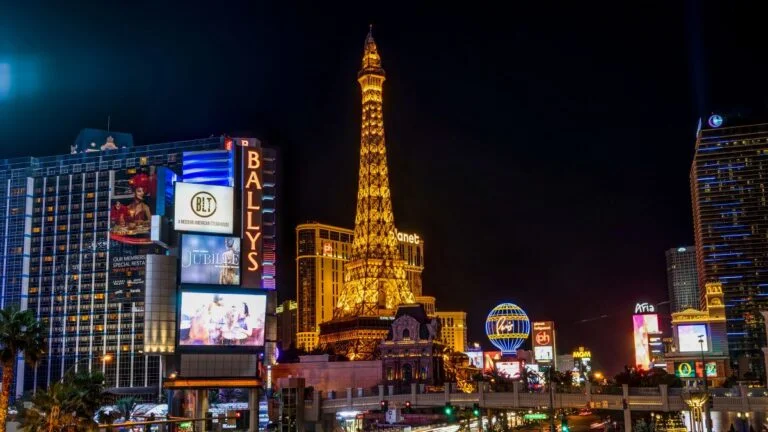Worst Time to Visit Melbourne: Understanding the City’s Seasonal Hurdles
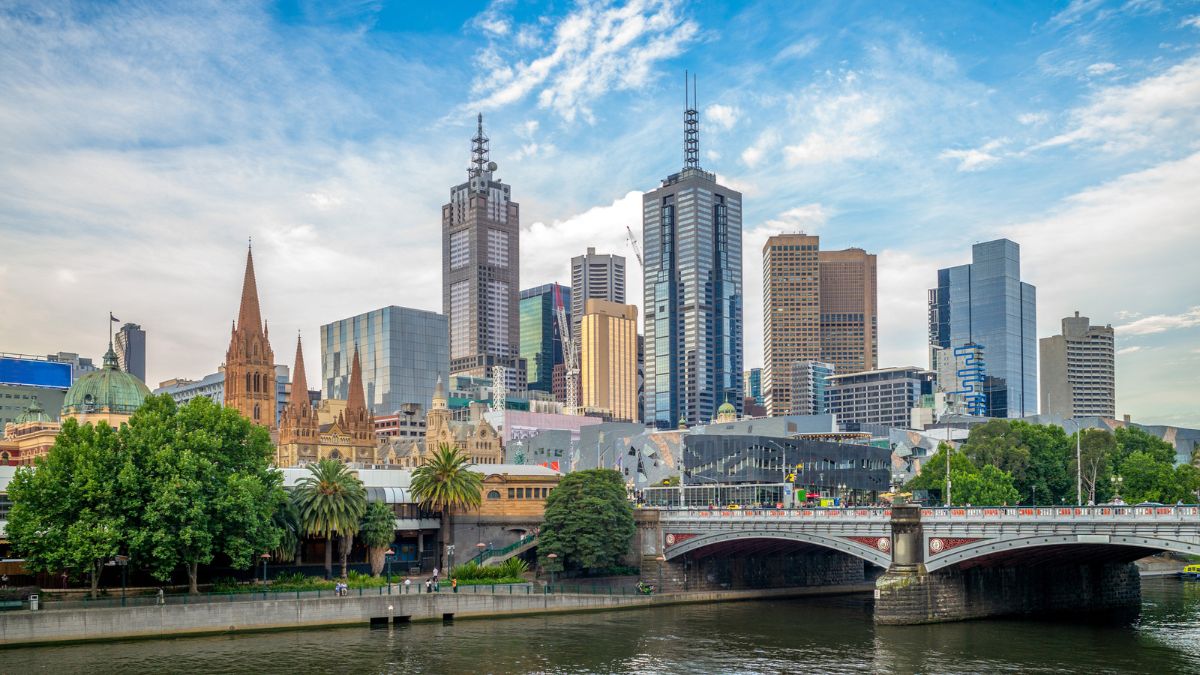
As participants in Amazon Associates and other programs, we earn from qualifying purchases. This comes at no additional cost to you. For more details, see our Affiliate Disclosure.
Melbourne, renowned for its vibrant culture, diverse cuisine, and iconic laneways, is undoubtedly a top travel destination for many. However, like any metropolis, it has its less favourable moments. Before you pack your bags and head Down Under, it’s crucial to understand the seasonal hurdles that might dampen your Melbourne experience. Let’s dive into those times of the year when visiting might be less than ideal.
HIGHLIGHTS
- The worst times to visit Melbourne include peak tourist seasons, major sporting events, and certain weather conditions, spanning across summer’s high temperatures to spring’s pollen season.
- December to February sees a surge in tourists and events like the Australian Open, leading to overcrowded venues and higher costs.
- Public transport, especially during significant events, may experience disruptions or increased demand, affecting city navigation.
- While Melbourne’s allure is year-round, understanding its seasonal hurdles aids in planning a balanced trip, considering both climate and city events.
Melbourne’s Fickle Weather: More Than Just a Joke
Locals often jest that in Melbourne, you can experience all four seasons in a single day. But behind that lighthearted quip lies a truth every potential visitor should be wary of. Melbourne’s climate, located in Australia’s southeastern corner, is characterized by its temperate and changeable nature. While this might lend the city its unique charm, it can also catch unsuspecting tourists off guard.
Start your morning with a warm and sunny disposition, and by afternoon, you might find yourself reaching for a raincoat as clouds roll in. By evening? Don’t be surprised if you’re shivering and considering a hot coffee to fend off the unexpected chill.
For those traveling from places with more stable and predictable climates, this can be a jolt. Packing becomes an art form; layers are your best friend. But beyond the tangible challenges of dressing appropriately, there’s also the potential impact on your plans. Outdoor activities, such as picnics in the Royal Botanic Gardens or a stroll down St Kilda Beach, can turn from idyllic to inconvenient with a swift weather shift.
It’s not all gloom, though. This unpredictability is part of what gives Melbourne its unique character. Cafes and restaurants are well-equipped for sudden changes, with outdoor heaters and blankets often at the ready. And there’s something incredibly cozy about watching a sudden rain shower from the comfort of a local coffee shop.
Winter Woes: The Chillier Side of Melbourne
When most people imagine Australia, sun-soaked beaches and warm, golden sands often come to mind. But Melbourne’s winters tell a different story. From June to August, the city embraces a colder persona, with temperatures often dropping to single digits Celsius. For those unaccustomed to it, Melbourne’s winter can be a chilly surprise, especially when compared to the warmer northern parts of Australia.
During this season, the city often wakes to a thick blanket of fog that rolls off the Yarra River, giving Melbourne a mystical and sometimes eerie appearance. Morning frosts are not uncommon, and while snowfall within the city itself is rare, the surrounding highlands can occasionally get a dusting.
But it’s not just about the cold. The winter months also see shorter days, with darkness setting in early, which can limit sightseeing and outdoor activities. Additionally, the frequency of rainfall increases, leading to more overcast days, which might not be to everyone’s liking.
However, it’s not all bleak. The city’s winter has its own unique charm. Melbourne’s cafes, ever the heart and soul of its social scene, become even cozier. Picture yourself nestled in a corner with a steaming cup of coffee or hot chocolate, watching the world go by. The cultural scene comes alive with winter festivals, arts events, and indoor performances. And for snow enthusiasts, the nearby Victorian Alps offer skiing and snowboarding opportunities.
Summer’s Scorcher Days: When Temperatures Soar
Melbourne in summer paints a vibrant picture: alfresco dining, sunlit laneways, and a buzzing energy that captures the heart. But with the beauty of summer also come the days when the mercury soars, presenting the city in its most scorching form. From December to February, while most days are warm and pleasant, there are instances when temperatures can climb well into the 40s Celsius, making outdoor activities a test of endurance.
These extreme heatwaves, often accompanied by a dry northerly wind, can be particularly challenging for visitors. The intense UV levels call for ample sun protection, with hats, sunglasses, and liberal applications of sunscreen becoming essentials. Dehydration becomes a real concern, making it vital to drink plenty of water throughout the day.
The high temperatures can also lead to disruptions. Sporting events, like the famed Australian Open tennis tournament, might see delays or adjustments for the players’ safety. Public transport, particularly the trams, can experience slowdowns or altered schedules due to heat-related precautions.
Yet, Melbourne knows how to adapt. Beaches, like the popular St Kilda and Brighton, become havens for locals and tourists alike, offering a refreshing reprieve from the heat. The city’s pools and splash parks are abuzz with activity. Moreover, the evenings, especially after a scorcher, can be beautifully balmy, perfect for rooftop bars, open-air cinemas, or simply strolling the Yarra’s banks.
Rainy Season Rundown: Packing for Melbourne’s Wet Months
Melbourne, in its myriad of charms, also dons the cloak of unpredictability when it comes to rainfall. Unlike some other destinations with clear wet and dry seasons, Melbourne’s rainfall is relatively evenly spread throughout the year. However, certain months, especially May to October, tend to be wetter, bringing with them a distinct set of challenges and experiences for travelers.
During these wetter months, sudden downpours can surprise visitors. One moment the sun might be shining bright, and the next, dark clouds could usher in a rain shower. This intermittent rain, while refreshing, can be a bit of a spoiler for those unprepared, especially if outdoor activities like the Great Ocean Road trip or Dandenong Ranges hikes are on the agenda.
Packing for this season requires a thoughtful approach. Waterproof jackets and umbrellas are essential. Opt for layers, as the weather can shift from cool to warm quickly. Waterproof footwear, preferably shoes that dry quickly, can be a godsend on a rainy day. And while on the topic of packing, a waterproof bag or backpack cover will protect your belongings during unexpected showers.
Yet, there’s a silver lining to Melbourne’s rainy days. The city has a knack for indoor entertainment. Museums, art galleries, and theaters provide shelter and cultural enrichment. The iconic laneway cafes and bars offer a cozy refuge, where watching the rain against historic buildings becomes a pastime in itself.
Event Overload: When Melbourne’s Calendar is Bursting
Melbourne is not just Australia’s cultural capital; it’s a hub for a plethora of events that draw both locals and tourists in droves. From sporting showdowns like the Australian Open and the Melbourne Cup to arts festivals, food and wine extravaganzas, and major concerts, the city’s event calendar is perpetually buzzing. But there are times when this buzz becomes an overwhelming roar, leading to an event overload that can be both a boon and a bane for visitors.
During peak event seasons, Melbourne transforms. The city’s energy is palpable, streets are festooned with banners, and there’s a general sense of festivity in the air. However, this also translates to crowded venues, booked-out accommodations, higher prices, and often, a more hurried pace. For those looking for a laid-back Melbourne experience, these peak times might be less than ideal.
It’s not just about the hustle and bustle. Navigating the city becomes more challenging. Public transport systems, especially trams and trains, are more packed, and roads can be congested, particularly near event venues. Some areas might even have traffic diversions, roadblocks, or limited access.
However, for those who thrive on energy and excitement, these event-heavy times can be thrilling. There’s the chance to be part of globally-renowned events, mingle with diverse crowds, and immerse oneself in the city’s vibrant event culture.
The Pollen Problem: Allergy Season in Full Swing
Among Melbourne’s many facets, one lesser-discussed but significant aspect is its pollen season. From October to December, as the city basks in the glory of spring and early summer, a more subtle phenomenon emerges: the release of vast amounts of grass pollen into the atmosphere. For allergy sufferers or those with asthma, this can transform Melbourne’s idyllic parks and gardens into challenging terrain.
The primary culprit behind this pollen surge is ryegrass, common in the vast pastoral regions surrounding Melbourne. When carried by the wind into the city, these pollen grains can trigger hay fever symptoms such as sneezing, runny or blocked noses, itchy or watery eyes, and even asthma in some individuals.
But it’s not just the everyday pollen levels that one should be wary of. Melbourne occasionally experiences what’s known as “thunderstorm asthma” events. These rare occurrences happen when a combination of high pollen counts and specific thunderstorm conditions cause pollen grains to burst into much smaller particles. These can penetrate deep into the lungs and potentially lead to severe asthma symptoms, even in people who haven’t had asthma before.
However, forewarned is forearmed. The city has mechanisms in place to help residents and visitors navigate this season. There are daily pollen forecasts available, and various apps and websites offer real-time updates. For those prone to allergies, it’s advisable to:
- Stay indoors on high pollen count days, especially in the morning when pollen levels peak.
- Keep windows closed and use air conditioning, if available.
- Consider over-the-counter antihistamines or consult a doctor for more specialized medication.
While Melbourne’s pollen season can be a hurdle for some, with adequate precautions and awareness, it’s possible to enjoy the city’s springtime bloom without discomfort. Understanding the pollen problem ensures that both residents and visitors can experience Melbourne in full bloom while minimizing allergy woes.
Crowds and Costs: Peak Tourist Seasons to Avoid
Melbourne, with its eclectic mix of arts, cuisine, sports, and natural beauty, is a magnet for tourists worldwide. And while a bustling city vibe can be invigorating, there are certain times when the influx of tourists can overshadow Melbourne’s charm, leading to overcrowded attractions, longer wait times, and heightened expenses. If a serene, cost-effective Melbourne experience is on your wishlist, understanding the peak tourist seasons is crucial.
High Season Hikes: From December to February, summer vacations are in full swing. Families, both local and international, descend upon the city, drawn by school holidays and major events. This often means crowded beaches, bustling streets, and attractions teeming with visitors.
Event Escalation: Melbourne’s events can significantly impact tourist influx. The Australian Open in January, the Melbourne Cup in November, and various arts festivals throughout the year lead to a surge in visitors. While these events can be a spectacle in themselves, they also result in packed accommodations and sometimes inflated prices.
Pricey Periods: Peak tourist seasons see a spike not just in crowd levels but also costs. Accommodation rates soar, and even restaurants and cafes might have higher prices or minimum spends. Airfares, especially during the festive season and major events, can be substantially higher than off-peak periods.
Seeking Serenity: For those who prefer a quieter Melbourne, consider visiting during the shoulder seasons. March to May (autumn) and September to November (spring) offer milder weather and fewer tourists, striking a balance between pleasant climate and accessibility.
While Melbourne’s appeal remains undiminished year-round, the experience can vary based on when you choose to visit. By identifying and possibly avoiding peak tourist seasons, you can explore the city’s myriad offerings at your own pace, sans the crowds and without burning a hole in your pocket.
Public Transport Pitfalls: Timetable Troubles
Melbourne, known for its iconic trams, expansive train network, and comprehensive bus routes, takes pride in its public transport system. It’s an integral part of the city’s fabric, often the preferred choice for both locals and tourists to navigate the sprawling urban landscape. However, like any major city’s transport system, Melbourne’s isn’t without its quirks and challenges. Understanding potential timetable troubles and other public transport pitfalls can help visitors plan better and ensure smoother transit during their stay.
Rush Hour Rush: Typically, between 7:30 am – 9:30 am and 4:30 pm – 6:30 pm on weekdays, the trams, trains, and buses experience peak traffic. Overcrowding, especially in central routes and CBD trams, can be uncomfortable and might mean longer waiting times.
Weekend and Night Service: While Melbourne’s public transport runs efficiently on weekdays, weekend and late-night services can be less frequent. This is particularly true for certain tram routes and suburban train lines. It’s essential to check schedules if you’re planning outings during these times.
Maintenance and Upgrades: Occasionally, sections of the train or tram network undergo maintenance or upgrades, leading to disruptions. Replacement bus services usually come into play, but these can be slower and less convenient than the regular service.
Zone Confusions: Melbourne’s public transport is divided into zones. While the CBD and inner suburbs are in Zone 1, some farther areas fall into Zone 2. It’s vital to know your zones to ensure you’re paying the correct fare and avoiding unintentional fines.
Ticketing Troubles: Melbourne uses a ticketing system called ‘myki’, a reusable smart card. While it’s generally user-friendly, visitors might find initial purchase and top-ups a bit confusing. Ensure you have a loaded myki and always touch on and off to avoid penalties.
While Melbourne’s public transport is a fantastic way to explore the city and its suburbs, being aware of its pitfalls can make your journey more comfortable. By planning ahead, checking schedules, and understanding the system’s nuances, you can navigate Melbourne like a local and make the most of your time in this vibrant city.
When Sports Take Over: Major Events and Accessibility
Melbourne wears its title of the “Sporting Capital of the World” with pride. From the roar of engines at the Grand Prix to the tension-filled rallies at the Australian Open, sports are entrenched in Melbourne’s identity. However, with major sporting events come challenges in accessibility, accommodation availability, and general city navigation. If you’re visiting Melbourne during one of its premier sporting events, or if you’re hoping to avoid the sports-induced hustle, here’s what you should know.
City-Wide Celebrations: Events like the Australian Open, the Melbourne Cup, and the AFL Grand Final don’t just fill stadiums; they spill over into city squares, parks, and public areas. Giant screens, fan zones, and pop-up stalls transform Melbourne, making it a city-wide celebration.
Transportation Tweaks: Public transport routes, especially those leading to sporting venues, see a surge in users. Some routes may have additional services, while others might be redirected or temporarily halted, especially if there are road closures near the event areas.
Accommodation Avalanche: Hotel rooms can be hard to come by, and rates often skyrocket due to the high demand. If you’re not in town for the sport, consider staying a bit farther from the central sporting venues or booking well in advance.
Non-Sporting Attractions: While sports dominate, Melbourne’s other attractions remain open and might be less crowded. It could be an excellent time to explore museums, galleries, or take day trips out of the city.
Access and Tickets: If you’re in town to soak in the sporting spirit, ensure you purchase event tickets from official channels to avoid scams. Some events also offer free access zones or cheaper general admission areas where you can still experience the event’s ambiance.
When sports take over Melbourne, the city pulsates with energy and passion. For some, it’s the best time to visit, immersing themselves in the city’s love for the game. For others, it’s a period of increased crowds and costs. Either way, being informed about what to expect can help tailor a Melbourne experience that suits your preferences and priorities.
Planning Your Visit: Balancing Weather and Events
Melbourne, a city renowned for its dynamic arts scene, delectable gastronomy, natural beauty, and of course, its sporting events, presents a tantalizing yet challenging prospect for potential visitors. Often touted as having “four seasons in a day,” its unpredictable weather combined with a packed events calendar makes planning a trip require a tad more strategy. If you’re aiming for the sweet spot – a balance between favorable weather and experiencing Melbourne’s vibrant events, here’s a guide to help you navigate your choices.
1. The Climate Conundrum:
- Summer (December to February): Expect warm days, perfect for beaches and outdoor activities. However, be wary of extremely hot days and the Australian Open crowd.
- Autumn (March to May): A mild and pleasant climate with autumnal hues. Fewer tourists post-summer rush make this a serene period, though it’s still bustling enough to feel the city’s pulse.
- Winter (June to August): Chilly and occasionally wet, but without the extreme cold of many other destinations. It’s a quieter season, ideal for museums, galleries, and indoor attractions.
- Spring (September to November): Spring blooms bring a fresh vibrancy, but also the onset of pollen season. It’s a transitional period with varied weather, leading up to the excitement of the Melbourne Cup.
2. Eventful Excursions:
- Sports Galore: From the Australian Open in January to the Grand Prix in March and the AFL season, decide if you want to join the fanfare or sidestep the crowds.
- Arts and Culture: Melbourne’s arts festivals, such as the Melbourne International Comedy Festival in March/April or the Melbourne Fringe in September, offer rich cultural experiences.
- Food and Wine: The Melbourne Food and Wine Festival in March showcases the city’s culinary delights, but restaurants and cafes buzz year-round.
3. Timing Tactics:
- Advance Bookings: If visiting during a major event, book accommodations and tickets in advance to avoid escalated prices and last-minute unavailability.
- Flexible Itinerary: Given Melbourne’s notorious weather swings, plan for indoor and outdoor activities, so you can adjust based on the day’s forecast.
In a nutshell, Melbourne offers a spectrum of experiences, each with its own charm. Whether you’re a sun-seeker, a culture enthusiast, a sports aficionado, or someone in between, with a bit of research and planning, you can curate a Melbourne journey that harmoniously balances both weather and events.


